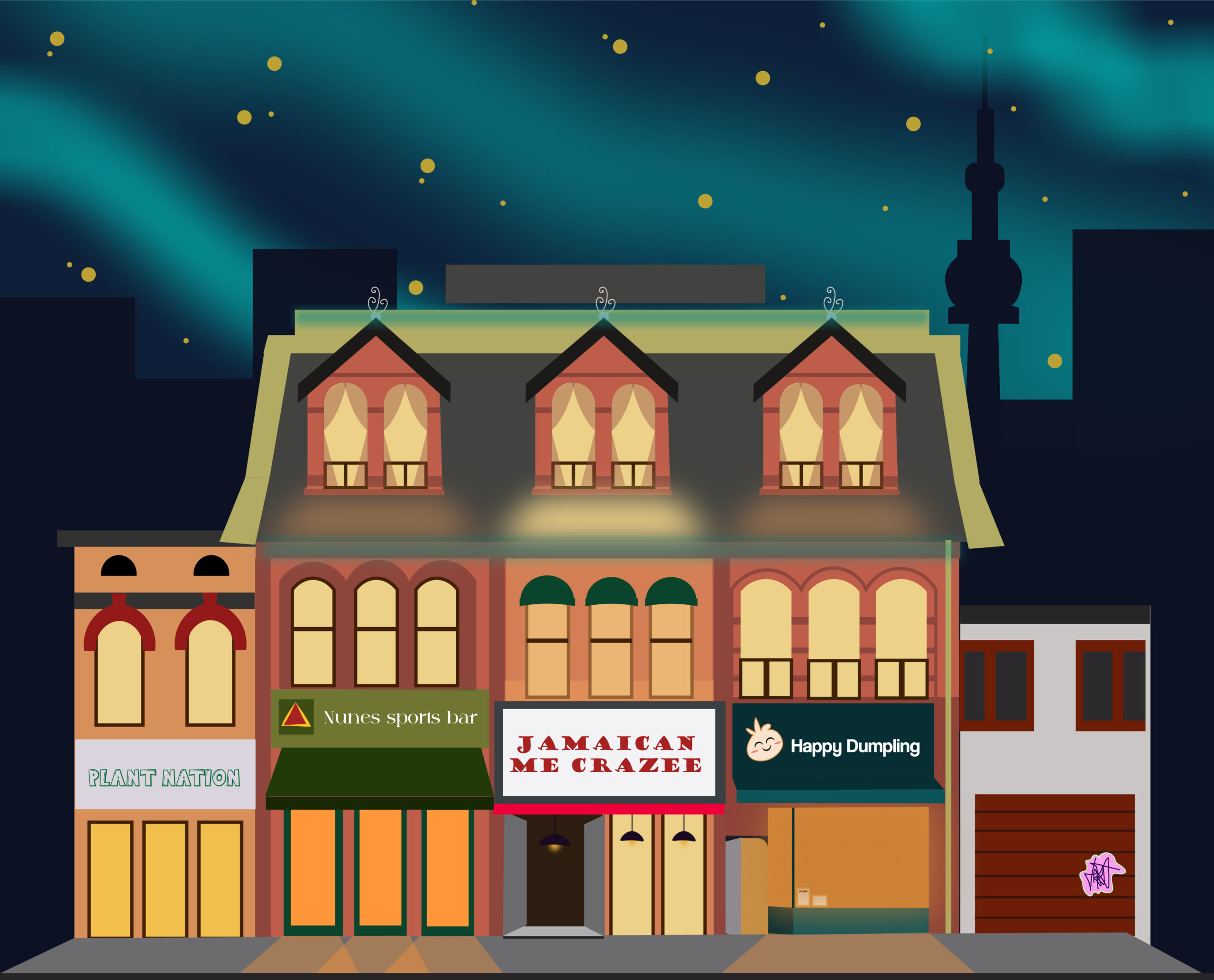Savouring the blend: the essence of culture in every bite
The connection between food, culture, and the melting pot of meals in Toronto.
Human civilization is like a richly-coloured rug with a myriad of cultural threads, each uniquely contributing to the grand mosaic of humanity. Among these threads, food stands out as a universal language, transcending linguistic and geographical boundaries to express the essence of a culture’s identity, history, and communal values. The experience of trying different flavours and foods is the easiest way one can expose themselves to the beauty of a culture. From enjoying dim sum to a hearty shawarma wrap, everyone can feel at home and indulge in the traditions and stories of each culture.
Ever since humankind learned how to prepare and cook, food transformed from just sustenance to a representation of tradition, history, and community. Eating became a communal activity, one that can be seen in our closest ancestral relatives who dine together: apes.
Research shows that apes share food with those deemed as allies or partners. For humanity, our population has expanded throughout the world and geographical factors have dictated the dietary habits of different civilizations. This resulted in the differences seen in crop cultivation, animal domestication, and culinary practices. Over centuries, these practices evolved into rich and diverse traditions, encapsulating the stories of the people and the essence of the land.
For example, the Mediterranean diet emphasizes olive oil, fish, and fresh vegetables. This reflects the region’s agricultural bounty and maritime culture. Similarly, the focus on rice and seafood dishes in Asian diets reflects the bountiful rice fields and the diverse marine life in the area. These culinary traditions provide a window into the cultures, revealing the social, economic, and environmental factors that have sculpted the societies that became what they are today.
Living in Toronto, one of the world’s most diverse cities, presents a fascinating interplay of food and culture. Toronto’s world-renowned culinary scene is a testament to the city’s rich microcosm of immigrant communities hailing from around the world. From the aromatic and rich pho of Vietnam to the fresh and satisfying Italian submarines and the robust flavours of Ethiopian injera, each bite of food in Toronto comes with a history of migration, adaptation, and cultural fusion.
As a result of the multicultural nature of Toronto, there has been an emergence of fusion food dishes around the city that combine flavours and traditions of different cultures. Jesse Navarathinam, an alumnus of the University of Toronto Mississauga and an ex-chef from Momofuku describes the culinary scene of Toronto as “unique and completely Torontonian.”
Momofuku, founded by David Chang in 2004, is the parent company of Momofuku Noodle Bar in Toronto. Although it recently shut down after 10 years of business on University Avenue, Momofuku showcased a menu filled with Asian-American fusion food. “They allowed us to come up with our own dishes to put on the menu. So if you came up with a dish that they liked, you will see it at dinner service,” Navarathinam explains. “That was the reason why the menu is so diverse. It reflects the culture and upbringing of different chefs.”
Fusion cuisine in Toronto reflects the city’s multicultural identity and its openness to new and adventurous cultural explorations. With this challenge from the mouths of Torontonians, chefs in the city are pushing the boundaries of traditional cuisine, fostering a deeper understanding and appreciation for the different cultures that are used in their practices.
Patois, a Jamaican-Asian fusion restaurant, offers dishes that meld Jamaican flavours with Asian influences, creating a unique culinary narrative that resonates with Toronto’s cosmopolitan spirit and values. The restaurant’s famous jerk chicken chow mein boasts the creative potential of fusion cuisine, combining the fiery spices of Jamaica with the comforting textures of Chinese noodles in the same bowl.
“I’m surprised that Toronto only just got its Michelin stars [in] late 2022. Or Canada in general. It’s such a crazy culinary scene where you can have all the flavors of the world within a train ride,” Navarathinam exclaims when talking about the recognition of Toronto being a world-renowned “flavour town.”
“I won’t be surprised if Toronto becomes on par with Paris and New York for food. There’s a pizza passport just for Toronto alone. Imagine the diversity and opportunities on the table now that the Michelin guide is here.”
With every bite of food comes the tradition and culture that dish hails from. It is important to not only enjoy the vast palate that different cultures provide, but also appreciate the culture itself. Without the colourful touch of diversity, there would not be such a flavourful and beautiful scene of mixing cultures.
Features Editor (Volume 50) — Louis graduated from UTM with a Bachelor of Science double majoring in Psychology and Professional Writing and Communication. He is currently in the field of UX/UI design, conducting research on how to improve user experience in apps and websites, designing websites for companies that are looking to branch online. As the Features Editor for Volume 50, Louis wants to bring the experience of reading enjoyable and informative for everyone. He hopes to showcase student voices and empower them through editing. When Louis is not at his computer designing websites or writing, he is opening Pokémon card packs chasing the Charizard or at the gym training his mind and body.


